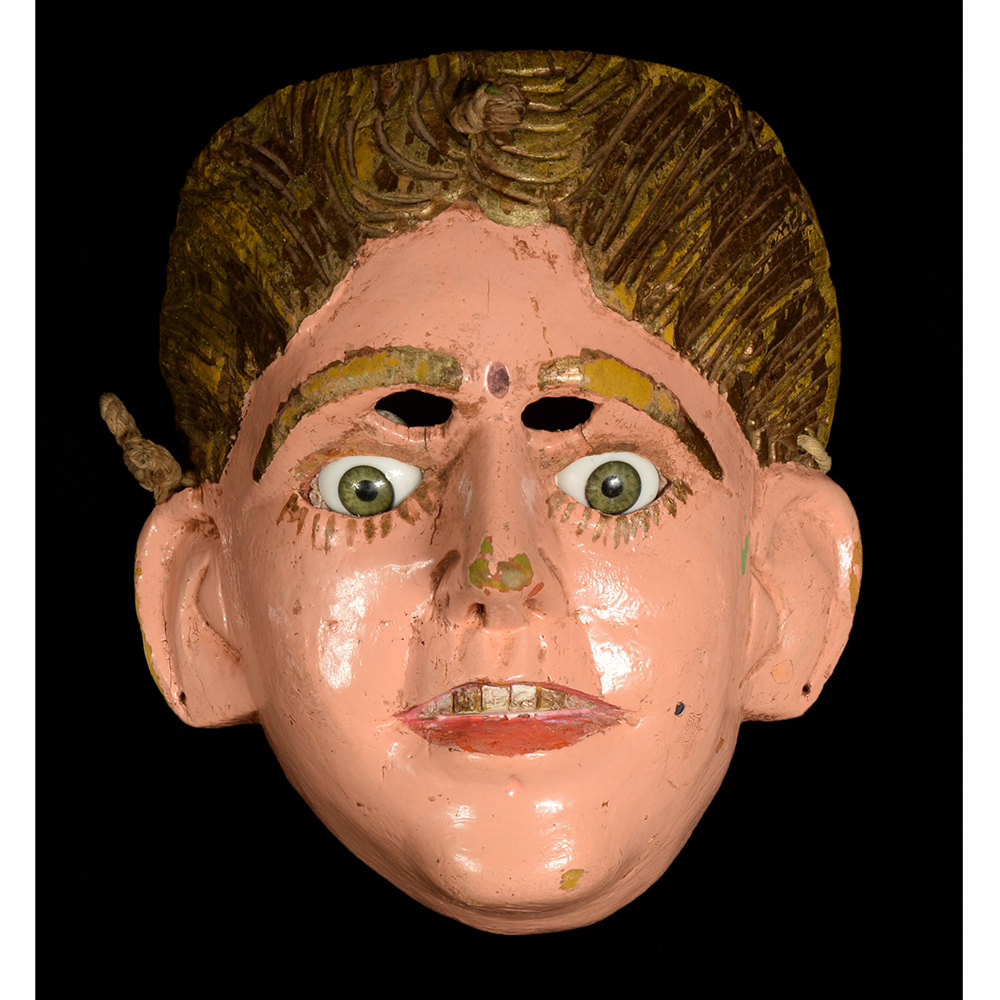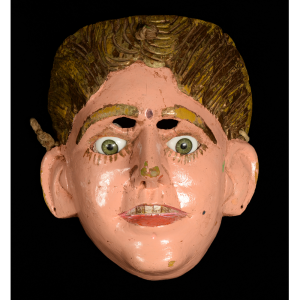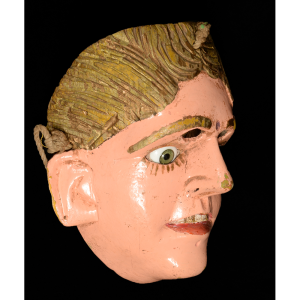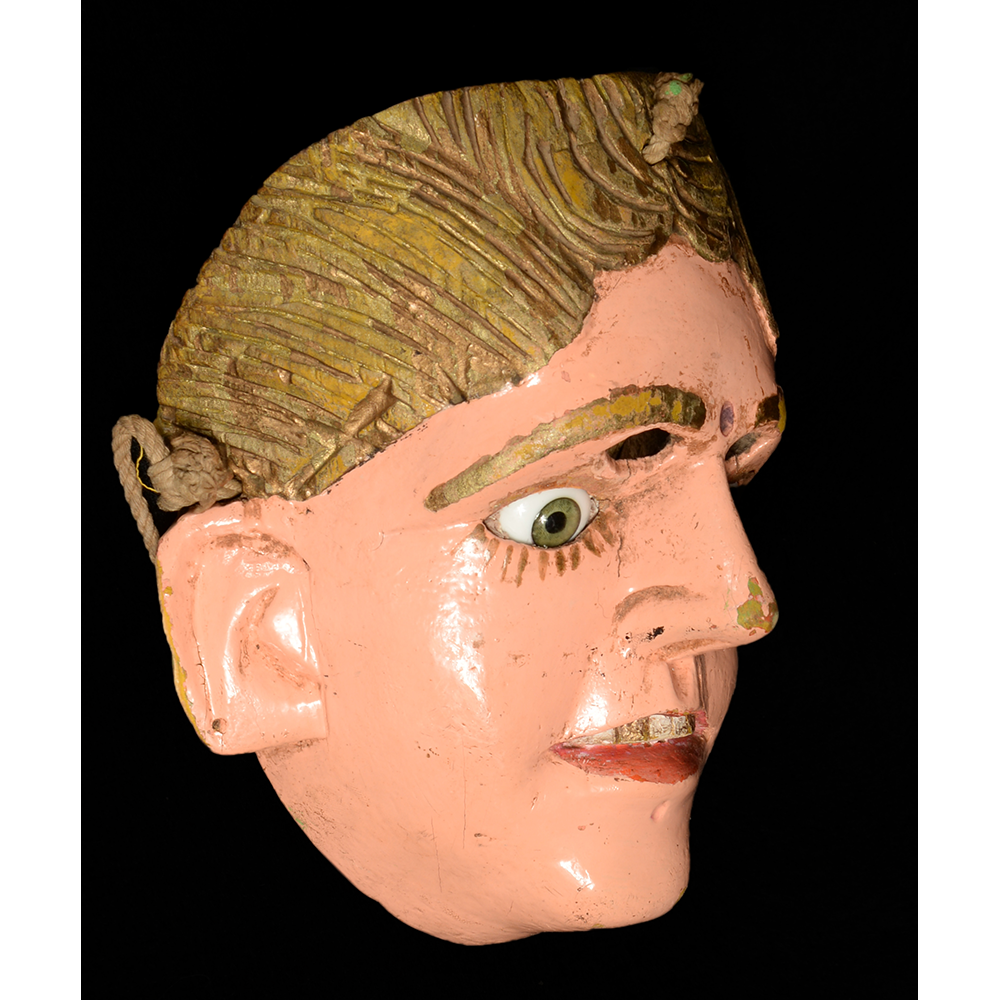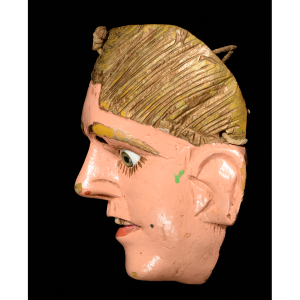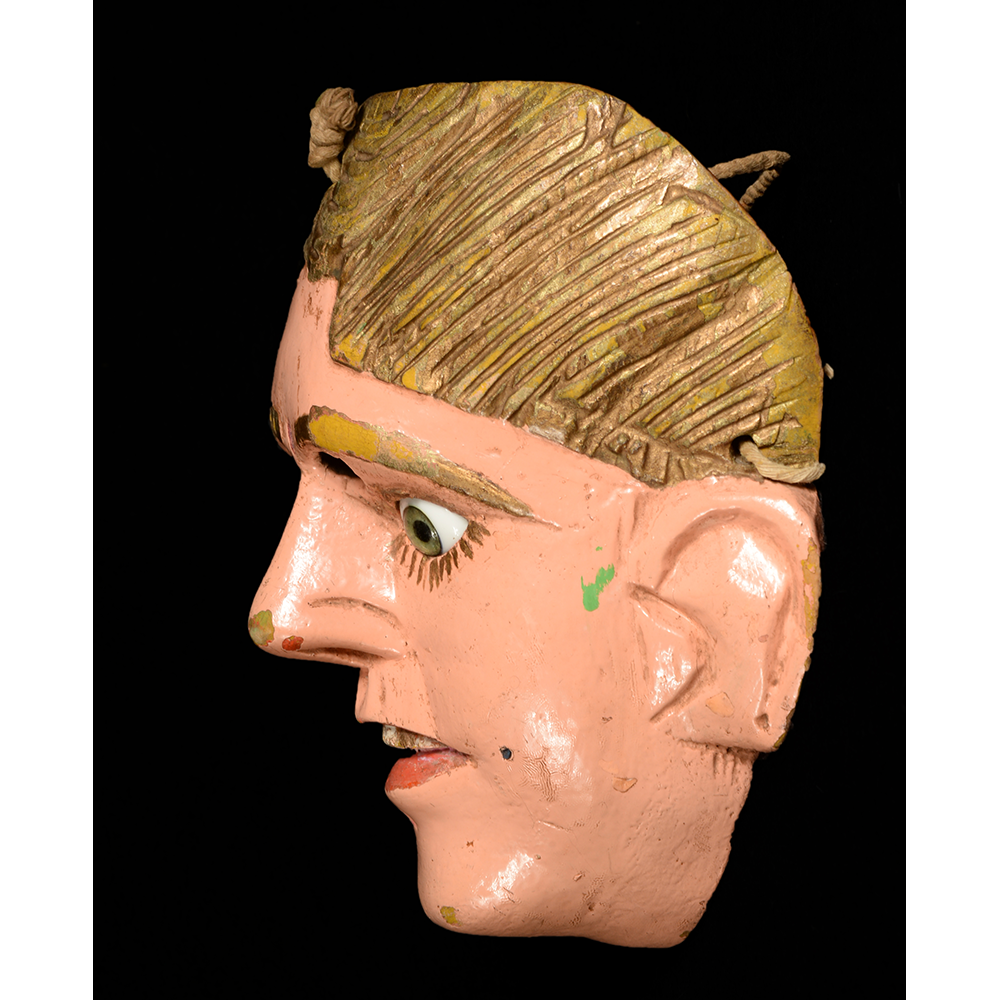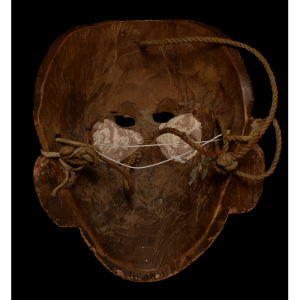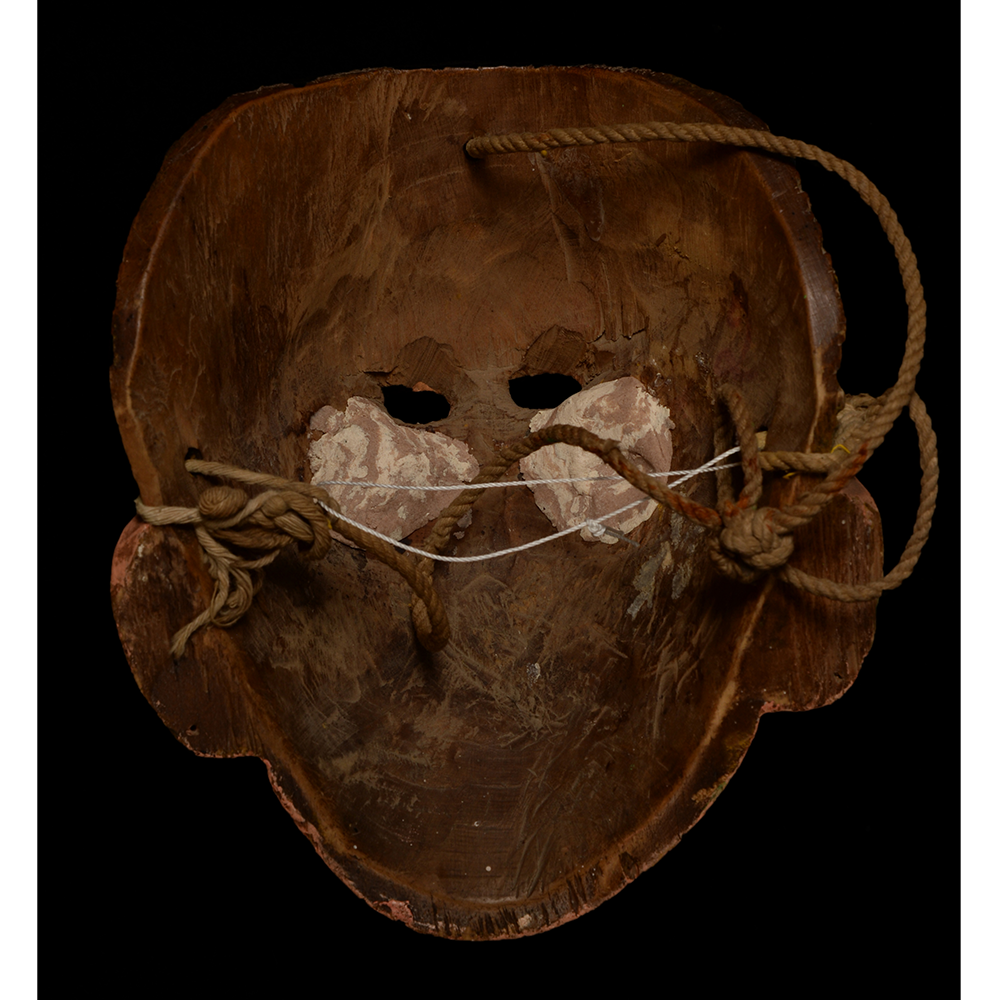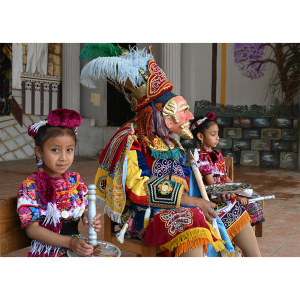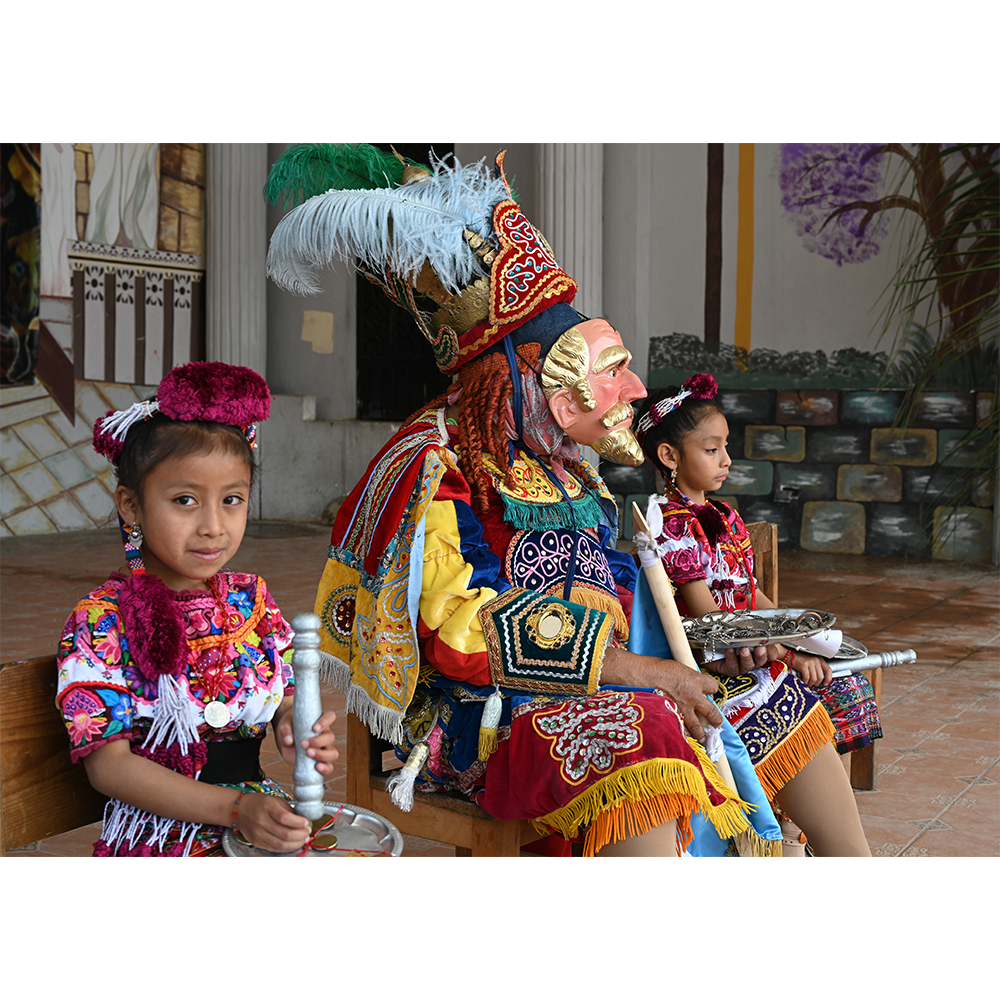TITLE: Conquista Malinche
TYPE: face mask
GENERAL REGION: Latin America
COUNTRY: Guatemala
SUBREGION: Totonicapán
ETHNICITY: Mayan (K’iché)
DESCRIPTION: Malinche Mask
CATALOG #: LAGT002
MAKER: José Alejandro Tistoj Mazariegos (San Cristóbal Totonicapán,, 1904-1985)
CEREMONY: Danza de la Conquista
AGE: 1965
MAIN MATERIAL: wood
OTHER MATERIALS: paint; German glass doll eyes; wood putty
The Danza de la Conquista (Dance of the Conquest), also sometimes called the Baile de Cortès (Dance of Hernán Cortez), is a ceremony performed in many parts of Guatemala, as well as Mexico and other parts of Central and South America. In Guatemala, the dance is supposed to tell the story of the conquest of the Mayan Empires, led by Tecu Uman, by the Spanish conquistadors, led by Pedro de Alvarado or Hernán Cortez. The dance involves a complex set of speeches and songs and, in many places, takes several hours to complete, often in two or three separate acts. In San Cristóbal Totonicapán, the Spaniards are led by Alvarado and come with a disciplined army. They are aided by two female characters, one of whom represents Malinche (called Doña Marina by the Spaniards), an Aztec princess who served as Cortez’s translator. Malinche and the other female were formally played by men in masks such as this one, but today they are primarily played by ummasked young girls, who sing periodically. The Mayan war council is advised by a shaman known as the ajitz, who helps but whose prophecies of Spanish conquest are ignored. In addition, an Aztec renegade assists the Mayans. After many speeches, discussions, songs, and melee battles, the Mayans are ultimately conquered and converted to Catholicism.
For more on Guatemalan masks, see Jim Pieper, Guatemala’s Masks and Drama (University of New Mexico Press, 2006).
This mask is from the second kind, and represents Malinche (properly, Malinalli), a noble Aztec maiden sold into slavery by her mother to the Mayans, then resold to the conquistador Hernán Cortés along with other girls. When he discovered Malinche spoke Nahuatl as well as Mayan, he used her as an interpreter in making the alliances with local peoples that ultimately led to the subjugation of all of Mexico. She and Cortés eventually became lovers, and she bore a son for him, but when Cortés’ wife arrived in Mexico, he married her off to another Spaniard.
The indigenous view of Malinche is mixed. Some view her as a heroine who helped turn Mexico to Catholicism, while others view her as a betrayer. Either way, she plays an important role in the dance retelling the conquest of Mexico.
